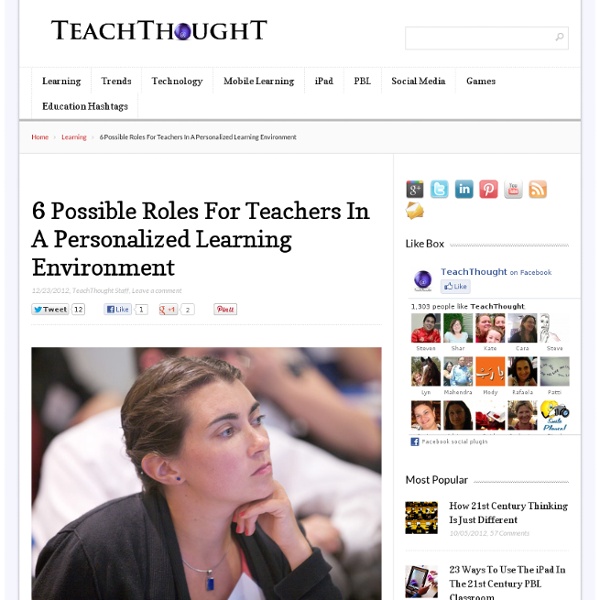Taitoperustaisen opetuksen suunnittelu
Iso osa opettajille suunnatuista koulutuksistani käsittelee sosiaalisen median pedagogista käyttöä. Koulutukset eivät keskity pelkästään välineiden opetteluun, vaan tavoitteena on suunnitella opetusta pedagogisesti korkeatasoisesti ja tulevaisuutta silmällä pitäen. Suomalaiset opettajat ovat toteuttaneet tässä kuvatun mallin pohjalta jo kymmeniä suunnitelmia. Sosiaalisella medialla on iso rooli näissä suunnitelmissa, mutta lähtökohtana ovat tulevaisuuden osaaminen ja pedagoginen suunnittelu. Ideat perustuvat siihen, että Oppiminen on mielekkäintä, tehokkainta ja kauaskantoisinta sisäisesti motivoituneena, aktiivisena ja yhteisöllisesti toteutettuna. Oppimisen ja oppimisympäristön ominaispiirteet Uudenlainen oppiminen asettaa uusia vaatimuksia oppimistoiminnalle ja oppimisympäristölle. Lähtökohtina tulevaisuuden taidot ja pedagogiset menetelmät Tässä oma-aloitteista ja yhteisöllistä toimintaa tukevat välineet nousevat keskeiseen rooliin. Sovelluksista Älä huku sovellussuohon.
How Digital Platforms Are Disrupting How Learning Happens
Media is becoming increasingly digitized, and we learn through, among other processes, consumption of media. It makes sense then that digital platforms just might be changing the way learning happens. A “platform” can be defined as an app, a website, an eLearning environment, or a collaboratively curated content source. 6 Examples Of Digital Platforms 1. 2. 3. 4. eLearning Environments: Khan Academy, Coursera, MOOCs in general 5. 6. The Disruption Part By delivering diverse access, formats for play, intentional equity, and a subsequent power shift, digital platforms more than anything else disrupt formal learning processes—both the institutions such as like universities, and the organizations which funnel students their way. But they also disrupt it in a social sense but altering the tone of knowledge, moving it from something strictly academic into a more useful, less pretentious, and more humble place. 1. By design, these platforms provide access. 2. 3. 4.
Culture Shift: When the Learner Owns the Learning
Alliance for Excellent Education's report on Culture Shift provides facts that point to learner-centered instruction and the use of technology to "guide students toward greater ownership of their learning." "It is not about instruction or technology. It is about the learner owning and driving their learning." Barbara Bray / Kathleen McClaskey The facts in the report are alarming and meant to inform and shake up the system: "One in four students now fails to graduate from high school on time, and African American and Hispanic students drop out of high school at nearly double the rate of their white peers." We know that school today is designed for the industrial age. What is the definition of culture shift in schools? To ensure deeper learning - to encourage problem solving and thinking skills and to develop and nurture highly motivated and engaged learners, for example - requires mobilizing the energy and capacities of teachers. “If culture changes, everything changes.”
Kehikko tiivistelmä OKKY - TekesOPPY oppimisympäristö-ohjelman valmistelu
Tavoitteena listata oppimisen kokeilu ja kehittämisympäristöt (= OKKY), määritellä OKKY-käsitettä sekä antaa suosituksia tulevaisuutta varten. Voit ilmoittaa tuntemasi OKKYn lomakkeella . Tämän wikin listauksesta voit tarkistaa, onko oma tai tuntemasi OKKY jo listattu. Mikä on oppimisen kokeilu- ja kehittämisympäristö OKKY? Oppimisen kokeilu- ja kehitysympäristöt -käsite ymmärretään monella tavalla. Ollakseen OKKY, toiminnan pitää olla jollakin tavoin avointa. Avoimia oppimisen kokeilu- ja kehitysympäristöjä on vähän. OKKYjen piirteitä Selvitystyössä luotiin kriteeristöä, jolla voidaan arvioida oppimisen kehittämis- ja kokeiluympäristöjä. 1. Arviointikriteereistä rakennetaan arviointimatriisi. 26.8.2010 arviointimatriisi näyttää tältä: Toimija = OKKYn virallinen osapuoli Lisätiedoilla voi täydentää. Voit antaa palautetta lomakkeella
Why Students Need Personal Learning Portfolios More than We Do
This post explores Personal Learning Portfolios [PLPs], an extension of a Personal Learning Environment. I review briefly PLPs for professionals, but focus on the potential and promise that PLPs hold for our students. I wrote recently about Personal Learning Environments [PLE], Personal Learning Networks [PLN] and the need for educators to develop both as a means to support their professional and personal growth and learning. Personal Learning Portfolios for Professionals Both posts generated meaningful discussion— with many comments coming from participants in the Education Technology & Media course (#ETMOOC). Yet, it is the following comment made during an asynchronous discussion between myself and two other educators that sparked the idea of introducing the concept of a PLP to students: “….my “hub” all of my digital work [this educator uses her blog as her 'hub', a platform for her portfolio]. My ‘working definition’ of a PLP for students: Example of Student Learning Portfolios



